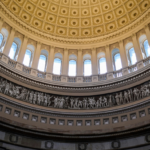CEQA Suspensions and Wildfire Recovery: What Attorneys Need to Know

Wildfires in California have long been a devastating force, destroying thousands of homes and structures, displacing residents, and creating significant legal and regulatory challenges. In the wake of the most recent fires that have impacted Los Angeles and Ventura counties, Governor Gavin Newsom has taken decisive action to expedite recovery efforts by suspending key regulations under the California Environmental Quality Act (CEQA) and the Coastal Act. But what does this mean for attorneys advising clients on land use, permitting, and rebuilding efforts?
CEB recently hosted an insightful webinar with legal experts Whitney Hodges and Lauren Chang, both partners in the Real Estate, Energy, Land Use, and Environmental Practice Group at Sheppard Mullin. They broke down the evolving regulatory landscape, key executive orders, and how attorneys can navigate these changes to support their clients effectively.
Understanding the Scope of CEQA and Coastal Act Suspensions
One of the most significant takeaways from the webinar was the extent of CEQA and Coastal Act exemptions issued through Executive Orders N-4-25 and N-20-25. These exemptions aim to eliminate bureaucratic red tape and allow for expedited rebuilding of the over 16,000 structures destroyed in the recent fires. However, these suspensions come with specific limitations:
- Projects eligible for exemption must be in substantially the same location as the original structure.
- The new structure cannot exceed 110% of the previous footprint and height.
- The exemption applies to supportive infrastructure, including foundations, utilities, and driveways.
- Local agencies, rather than the Coastal Commission or state authorities, are the sole decision-makers regarding eligibility.
This last point is particularly critical, as it means local jurisdictions will have broad discretion in determining how these orders are implemented. Attorneys should closely monitor how different cities and counties choose to interpret these exemptions, as inconsistencies could lead to disputes or delays.
The Tension Between State and Local Authority
One of the more nuanced discussions in the webinar focused on the potential conflicts between state executive orders and local land use authority. The California Coastal Commission initially resisted the broad application of these exemptions, issuing guidance that suggested CEQA compliance was still required. In response, Governor Newsom issued Executive Order N-14-25, which explicitly directed the Coastal Commission to avoid taking any action that contradicts the CEQA and Coastal Act suspensions.
Despite this, some local agencies may still attempt to impose additional requirements or delays. Attorneys working with clients in impacted areas should be prepared to push back against local agencies that seek to enforce outdated or conflicting regulations.
Impact on Temporary Housing and ADUs
Housing remains a central concern in the aftermath of these wildfires, especially given California’s ongoing housing crisis. The executive orders include provisions that allow for the expedited approval of accessory dwelling units (ADUs), even if they did not exist prior to the fires.
This is a notable shift, as initial local responses, such as Los Angeles Mayor Karen Bass’s Executive Order 1, specifically prohibited new ADUs in impacted areas. However, Governor Newsom’s executive orders overruled this prohibition, making it clear that new ADUs can be built as long as they meet certain setback and safety requirements. Additionally, the orders waive restrictions on placing mobile homes, manufactured homes, or RVs on private lots for up to three years, providing much-needed temporary housing options for displaced residents.
Speeding Up the Rebuilding Process
One of the primary goals of these regulatory changes is to reduce permitting delays. Under the executive orders:
- Building permit applications must be processed within 30 days once they are deemed complete.
- Demolition permits are waived for structures substantially damaged by the fires.
- Coastal Development Permits (CDPs) are automatically extended for three years, reducing the risk of project expirations delaying reconstruction efforts.
However, as Hodges and Chang pointed out, these timelines may still be challenging to enforce in practice. Many local agencies are already understaffed, and the volume of applications could lead to backlogs. Attorneys should work closely with clients to ensure applications are complete upon submission and be prepared to advocate for timely processing.
Looking Ahead: Pending Legislation and Long-Term Implications
The webinar also covered key legislative efforts that could further impact wildfire recovery efforts. More than 30 wildfire-related bills have been introduced at the state level, including:
- SB 375 – Aims to streamline vegetation management and fire mitigation efforts while balancing environmental protections.
- SB 252 (Power Line Safety Act) – Seeks to exempt power line undergrounding projects from CEQA review to reduce fire risks.
- AB 818 – Would mandate permit approvals within 45 days for rebuilding residential properties impacted by disasters.
These bills indicate that the regulatory landscape is still shifting, and attorneys should stay informed about new developments that could impact rebuilding timelines and requirements.
Final Thoughts: Key Takeaways for Attorneys
The legal framework surrounding wildfire recovery in California is evolving rapidly. Here’s what attorneys should keep in mind:
- Monitor Local Implementation – While state executive orders provide broad suspensions, local agencies retain discretion in determining eligibility. Attorneys should track how different jurisdictions are interpreting these changes.
- Advocate for Clients – With tight permitting timelines and potential bureaucratic hurdles, attorneys should be proactive in ensuring applications are complete and advocating for timely approvals.
- Stay Updated on Legislative Changes – With new bills being introduced regularly, attorneys must keep an eye on pending legislation that could impact rebuilding efforts.
- Be Prepared for Challenges – Conflicts between state and local mandates, as well as potential pushback from regulatory bodies like the Coastal Commission, could create legal gray areas.
California’s wildfire recovery will be a long and complex process, but the regulatory changes in place are a step toward accelerating rebuilding efforts. Attorneys advising clients in this space play a crucial role in navigating the shifting legal landscape and ensuring that those affected can rebuild efficiently and effectively.
Watch the entire webinar on-demand.
Read more related content
- California’s Proposed Antitrust Crackdown: SB 763 Penalties Could Jump from $1 Million to $100 MillionCalifornia’s Proposed Antitrust Crackdown: SB 763 Penalties Could Jump from $1 Million to $100 Million A $1 million penalty for California corporations found guilty of criminal antitrust charges could soon … Continued
- California Wildfire Legal Response: Executive Orders, CEQA Exemptions, and Rebuilding GuidelinesCalifornia Wildfire Legal Response: Executive Orders, CEQA Exemptions, and Rebuilding Guidelines The Los Angeles and Ventura County wildfires are, first and foremost, a human tragedy, displacing families, devastating communities and … Continued
- Navigating the Litigation Process in California: A Practitioner’s Handbook Litigation in California can be a complex and time-intensive process, requiring legal practitioners to have a thorough understanding of procedural rules, case law, and effective legal strategies. Whether representing plaintiffs … Continued



